From copying to self-development. Foreign roots of Iranian ATGMs
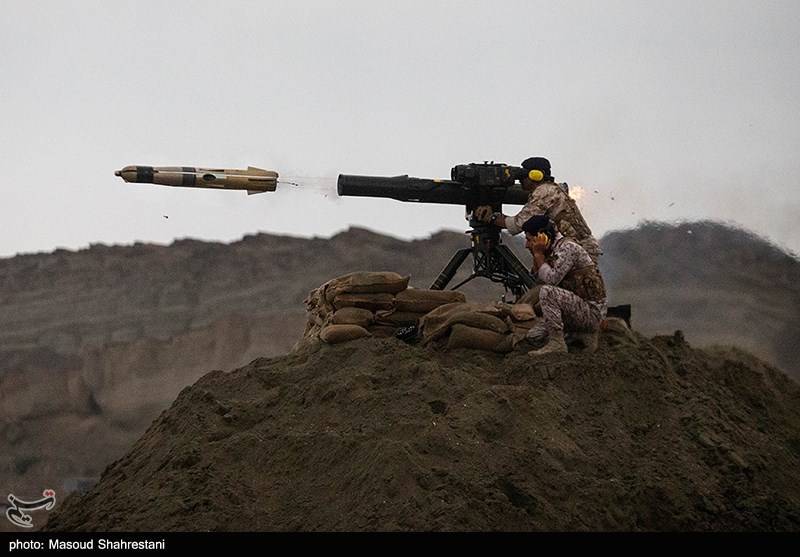
Launch of the Tufan rocket. Photo: Tasnim News
In the eighties, Iran launched its own production of anti-tank missile systems. To date, its industry has created and brought to production a large number of models and modifications of such weapons. At the same time, a number of Iranian ATGMs are of foreign origin - they were directly copied from foreign models or created with an eye on other people's products. This approach allowed us to accumulate experience and knowledge for the further creation of our own projects.
Import and copy
In the early seventies, Iran, then ruled by the Shah, became one of the first foreign buyers of the American BGM-71 TOW second-generation man-portable / transportable ATGM. Before the Islamic Revolution and the severance of relations with the United States, the Iranian army managed to acquire a large number of such products. At that time, TOWs were the most effective anti-tank weapons available to Iranian infantry.
During the war with Iraq, the Iranian army actively used existing anti-tank systems. At the same time, the supply of imported systems and missiles was constantly decreasing, and it was necessary to find a replacement for them. In this regard, in the first half of the eighties, an order was issued to copy and produce the American BGM-71.
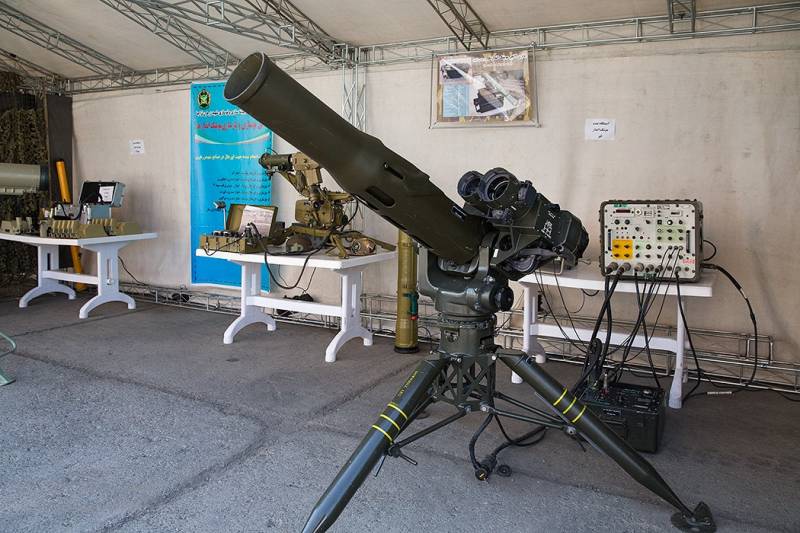
Launcher "Tufan". In the background are other Iranian ATGMs. Photo by Fars News
Over the next few years, enterprises from the Organization aviation Iranian industry carried out the necessary design and other work. In 1985-87 The Iranian copy of the Tou reached testing, and based on their results it was adopted for service. In 1987, the new Tufan (Typhoon) ATGM was first presented to the public, and production and deliveries to the troops soon began.
Our own production of an analogue of TOW made it possible to meet the army's needs for anti-tank weapons. In addition, in the eighties the groundwork for future development was created. The original “Tufan” was developed, as a result of which about a dozen modifications of the complex appeared with certain features and differences. As the design was improved, the launch range increased and combat qualities improved.
Initially, it was only about copying the finished complex, and therefore the tactical and technical characteristics and capabilities of Tufan and TOW coincided. In the latest modernization projects, the missile's flight range was increased to 5-6 km, and the cumulative warhead was improved or replaced with charges of other types.
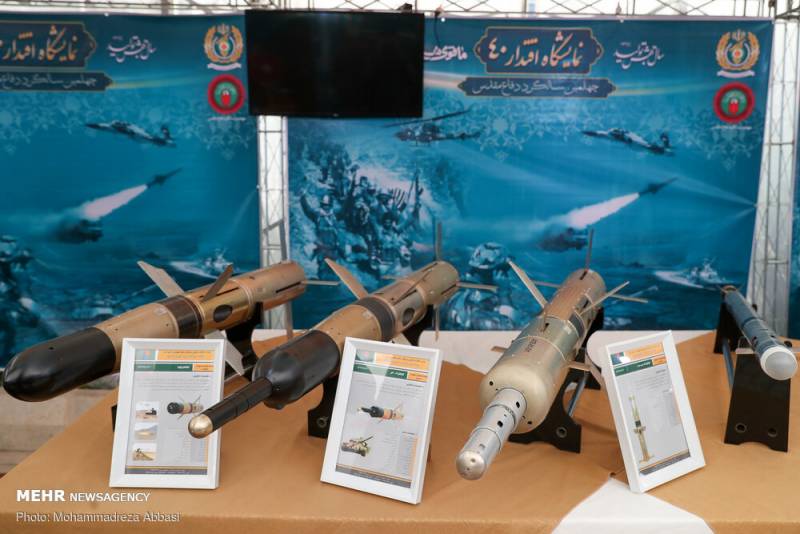
Missiles of the Tufan family. Photo by Mehr News Agency
In an effort to quickly meet the needs of the army, Iran in the mid-eighties acquired a Soviet-made portable first-generation 9K14 “Malyutka” ATGM from friendly foreign countries. This complex was distinguished by its simplicity of design, and enterprises from the Defense Industry Organization were tasked with copying it.
Serial production of the Raad (Thunder) ATGM began in 1988, and it entered service almost simultaneously with the Tufan. The two complexes complemented each other and made it possible to obtain the necessary capabilities at a reasonable level of costs. According to various sources, the Raad ATGMs were produced until the beginning of the XNUMXs, after which their assembly was discontinued due to complete obsolescence and the required production rate of more advanced systems.
The Raad product was at first a complete copy of the Soviet Malyutka, but later the design of the rocket and ground assets was refined and improved. Thus, the Raad-T missile received a tandem warhead, and then a launcher with semi-automatic control devices was developed. While maintaining range characteristics, this made it possible to increase the accuracy and reliability of hitting targets.
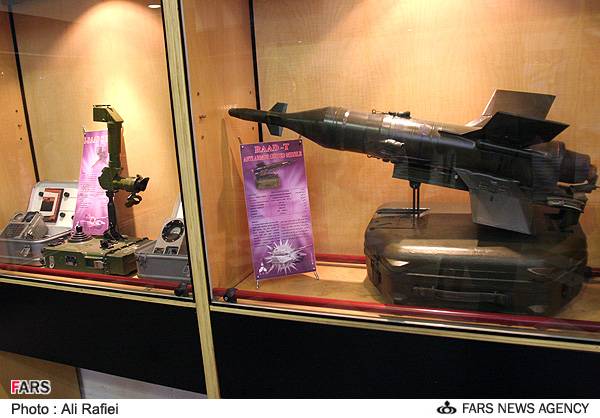
Complex "Raad" in the museum. Photo by Fars News
Official license
Iranian interest in Soviet ATGMs was not limited to the Malyutka. Thus, according to foreign sources, in the early nineties, Iran ordered directly from Russia a number of second-generation 9K113 “Konkurs” complexes. In addition, during the same period, they acquired an official license to produce such weapons for their own army.
Apparently, when mastering the production of the new ATGM, the Iranian Aviation Industry Organization encountered certain difficulties. Because of this, serial production of the complex could only begin at the turn of the nineties and two thousand. The Iranian version of the “Competition” was called “Tucson”.
As in previous cases, the foreign design was copied without significant changes. At the same time, unlike “Raad” or “Tufan”, the Iranian “Competition” was not further improved. Apparently, the customer decided to develop other lines of ATGMs and create new models.
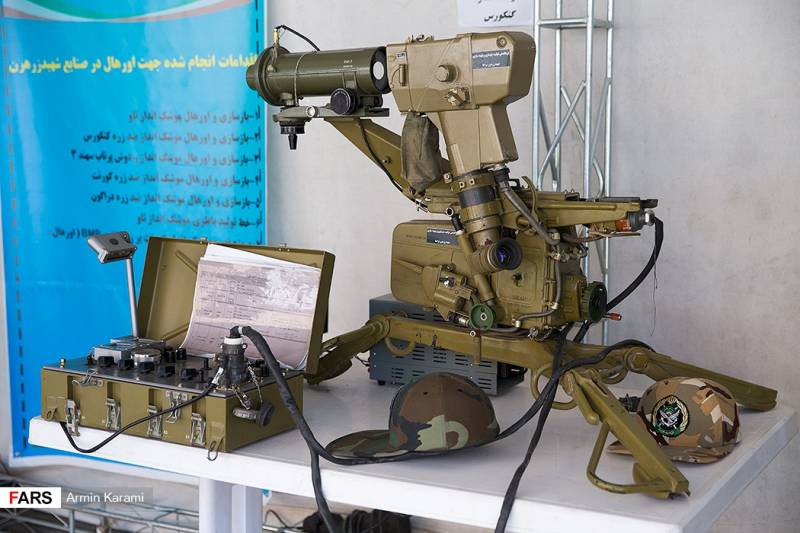
ATGM launcher "Tucson" / "Konkurs". The missile has not been installed. Photo by Fars News
Based on ideas
In 2012, the Iranian industry for the first time introduced the newest portable ATGM “Dehlavieh” (a settlement in the Khuzestan province, near which active battles took place in 1980). The appearance and declared characteristics of this product indicated a copy of the Russian 9K135 Kornet complex. However, the Iranian side denied copying and spoke of independent development. However, it could not have happened without the use of foreign ideas.
Subsequently, the Dekhlavie complex was actively developed. Nothing is known about the modernization of missiles, but the launchers have been repeatedly modified and new devices created. Thus, new optical devices were introduced, incl. with the night channel. A version of a portable launcher for two missiles has been developed. Of great interest is the Piruz product - an automated remote-controlled installation carrying two TPK with missiles. This installation is proposed for installation on various carriers, such as armored vehicles.
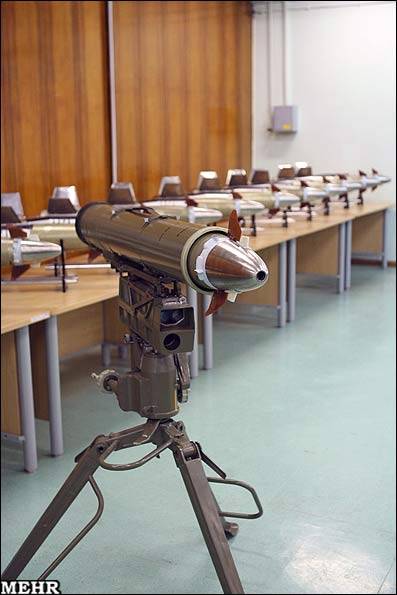
The assembled Dekhlavie complex and serial missiles. Photo by Mehr News Agency
In terms of its tactical and technical characteristics, the Iranian Dekhlavieh ATGM is similar to the Russian Kornet of the first versions. The complex includes a missile with high supersonic flight speed with a range of up to 5-6 km. Guidance - by laser beam. A tandem warhead with penetration of at least 1 m was used. Perhaps, after 2012, the Iranian industry refined its newest ATGM and improved its characteristics.
From copying to development
Over the past 35 years, the Iranian defense industry has developed a range of anti-tank missile systems for infantry into production and military use. In addition, anti-tank grenade launchers and guided weapon systems for tanks etc. At the same time, a curious trend was observed in all such directions.
At the first stage, Iran tried to obtain foreign anti-tank systems, studied them and copied them, taking into account existing production capacities and competencies. Thus, the first versions of the Tufan and Raad complexes were created. Subsequently, Iranian enterprises tried to independently improve existing samples, and also mastered the production of other foreign products under an official license. This is how a copy of the Soviet “Competition” and, presumably, a licensed “Cornet” appeared.
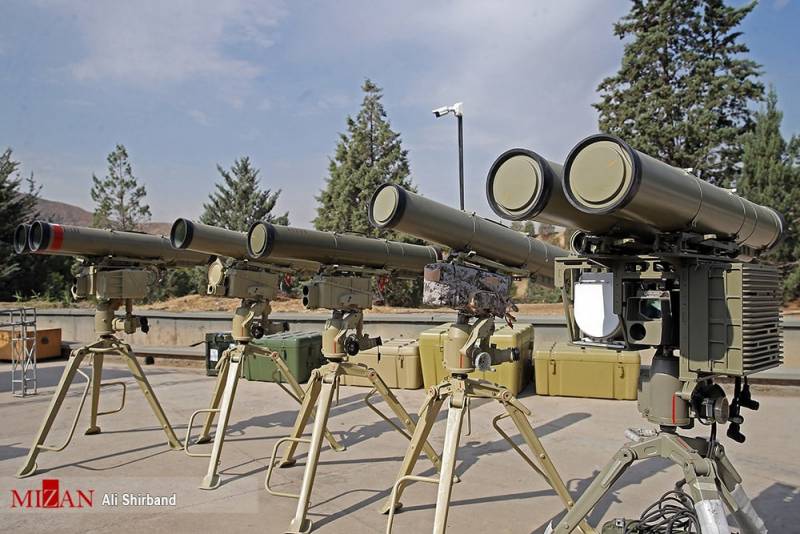
Dehlavieh launchers of several types. Photo Mizan Online
It should be noted that Iranian projects for modernizing ready-made models, such as later versions of the Tufan ATGM, are highly sophisticated and provide great advantages over original weapons. This shows that Iran has accumulated the necessary experience and competencies that allow it to move forward.
Now we are talking about completely independent developments that have no direct connection with existing foreign models. Thus, in the recent past, the new Almaz-1 ATGM began to be shown at exhibitions. It includes a lightweight missile that can be used with a man-portable launcher or used by unmanned aerial vehicles. It is obvious that new interesting premieres will take place in the near future.
The Way to Leadership
Thus, over the past few decades, Iran has come a long way and has actually created a new branch of its defense industry. In the early eighties, the Iranian army could only count on the accumulated reserves of foreign anti-tank systems, but then the opportunity arose to independently replenish the arsenals, incl. completely new products.
To date, Iran has shown the ability not only to copy and improve ready-made foreign designs, but also to create its own designs. Due to the closed nature of such developments, their potential is not entirely clear. But we can assume that now the Iranian industry is going to fight for a place in the narrow circle of world leaders in the field of anti-tank systems.
Information